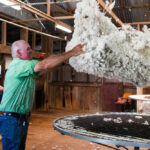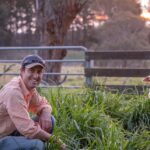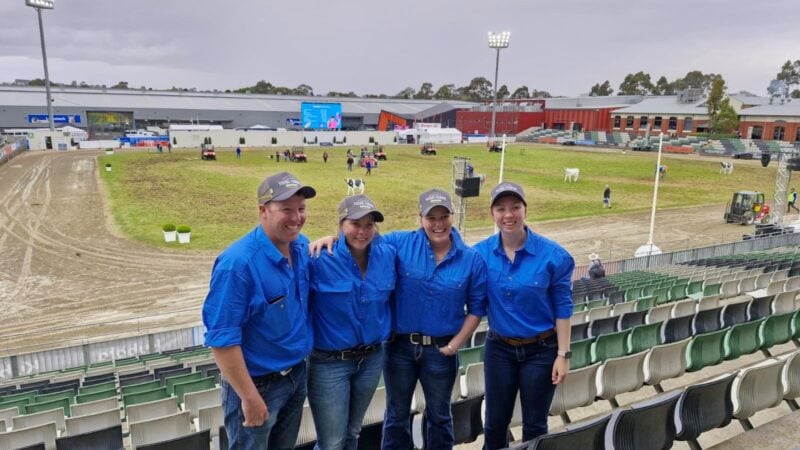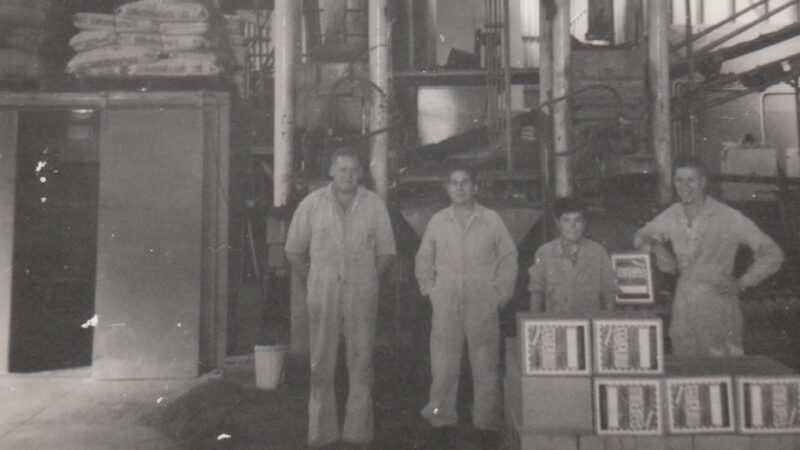Gilgandra farmer Angus Beveridge has helped coordinate the delivery of almost 400 Merino wethers to…
The Armstrongs of Callubri Station
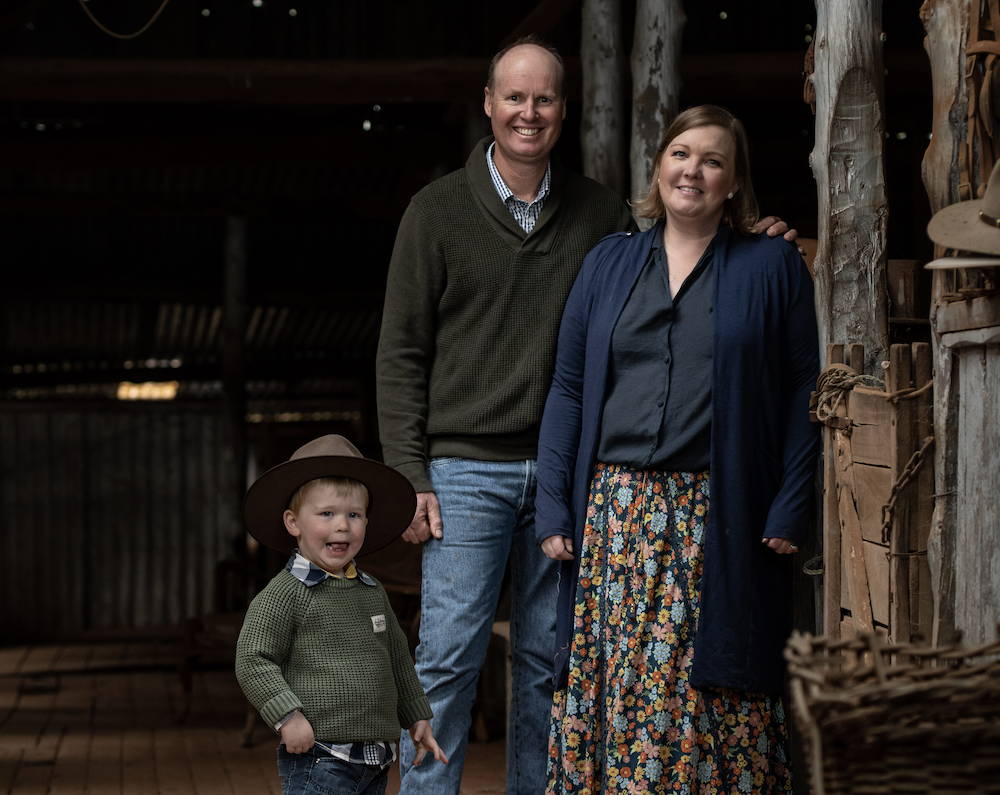
Covering 28,500 acres in the Western Plains of NSW, around 50km south of Nyngan, Callubri Station sits on the edge of the outback, where green fields meet red dirt country.�
From the start, it has been a sheep station, producing merino wool and lambs. Today, it runs around 12,500 sheep along with more than 5,000 acres of wheat, canola, oats, lupins and barley. Mike Armstrong, 46, is the fourth generation to farm the property, and lives there with his wife Angie, 44, and their five-year-old son Eamon.
�I believe you need to make your own decision to become a farmer, as it is not an easy job or particularly high paying. Yes, you have job certainty on the farm, but the catch is you don�t know if you are going to be paid!�
Mike Armstrong
That explains why young Mike spent a number of years working in finance in Melbourne.�
�My family were very supportive in providing world experience and allowing me to start a career in banking, but there was always an expectation that I would return to the family business,� he says. �The excitement of the city and high paying banking jobs made the decision to move back more difficult. Eventually I realised that my job satisfaction in the corporate world was closely linked to the abilities of the people above me, and job security was directly linked to market performance. On the farm, you get out of it what you put into it, and you own your own successes and failures.�

As fate would have it
In 2006, just six months after he returned to Callubri Station, fate threw a spanner in the works; he met Angie through his cousin at a party in Melbourne. Angie had a high-flying career in IT and no plans to move to a remote sheep station in the outback. And yet, the pair began dating over a 1,000km distance, eventually marrying in 2009. Coincidentally, Angie�s great-grandfather had grown up on a farm near Callubri. �By pure accident I ended up back out here where my family started,� she says. In the face of great personal change, it was Angie who had the idea to take the historic station in a new direction.
�The biggest challenge for me moving out here was to find my groove in terms of work, and see what I was going to bring to the table. I would jump on a header or tractor when needed, but it�s really important to have that sense of self-worth and purpose as a partner.��
Angie Armstrong
When the pair married in 2009, she made a resolution to start her own business and soon after The Cocky�s Wife catering company was born. Though it began as a side project, it grew rapidly. �Soon I was catering functions for hundreds of people, so I needed an industrial kitchen. Then I sort of fell into running a caf� in the main street of Nyngan, also called The Cocky�s Wife,� she explains. But she recognised that this kind of hospitality wasn�t for her and wanted to incorporate her new home into the dream. �I knew that the next thing I wanted to run needed to showcase the history of this incredible property,� she says.
Her �next thing� was accommodation on the property. Angie could see that there was a gap in the Australian market; luxury lodges offer chic accommodation in remote places, but you won�t find any on a working farm of Callubri�s scale. Farmstays tended to be very basic and didn�t offer the full five-star experience. Angie was sure that there had to be a middle ground, and so she approached the state tourism board, Destination NSW, for funding.
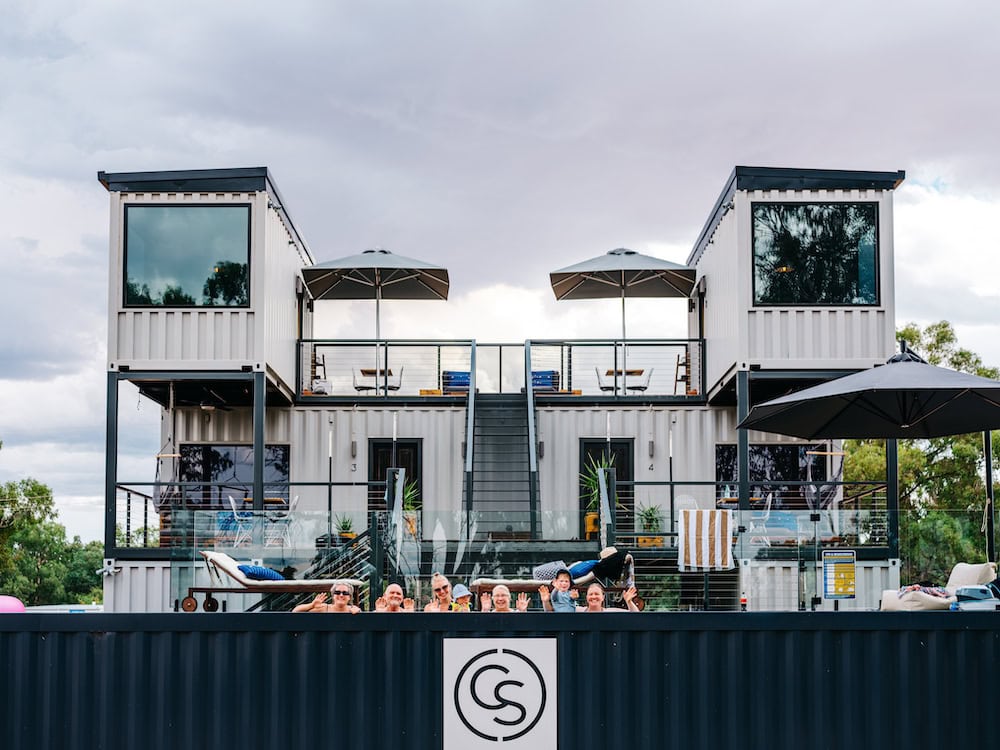
�The first person I spoke to on the phone said �that�s a great idea�, and I almost cried,� Angie says. �That was the first time someone said �yes, that�s awesome, give it a shot�.�
As well as that much needed confidence boost, Destination NSW matched funding dollar for dollar up to $150,000.
Family support and a luxury farmstay
It was also important to have the support of the family across the generations. Callubri Station is still very much a family affair. Mike�s parents, Charles and Lynn, live in Dubbo and Charles still comes out to work on the property a few days a week. �We admired the courage and enthusiasm and realised the next generation was ready to diversify,� says Charles. �It was a pretty big gamble,� Angie admits. �I had no background in tourism or accommodation, but my gut told me it would work really well out here.�
She was right. Set on the banks of the Bogan River is the luxurious Callubri Station farmstay. Made from shipping containers stacked three storeys high (well above the potential flood level), it�s an ultra-modern design that juxtaposes the original farm buildings. �I was very wary of the history on the property, it has an incredible depth and authenticity,� Angie says. �I didn�t want to take away from that.� The containers also have practical applications � they are mouse proof, dust proof and could be fitted out offsite.

There are five Sky Suites, kitted out with pillow top king beds, ensuites with rain showers, mini kitchenettes, air conditioning and outdoor decks. The huge floor-to-ceiling windows offer epic views out over the property. The River Suite is an accessible king room with a ramp and full wheelchair access, and there�s also a three-bedroom cottage suitable for pilots or tour guides. The 12-metre heated mineral swimming pool is made from another shipping container and surrounded by plush sun lounges. It�s a chic set up designed to appeal to high-end groups travelling on private air charters, hopping across Australia in search of outback luxury.
Upholding history, and remaining authentic
Callubri Station�s future has also made it possible to preserve its past. Many of the historic buildings on the property � which include log cabins from the 1800s � were falling into disrepair. Without a financial incentive to maintain them, it would be difficult to justify the ongoing maintenance to keep them standing. �The older generation were excited to see the history restored and showcased to visitors,� says Angie. For example, the old Shearer�s Quarters has become a rustic-chic guest lounge where meals are also served in the evening.
Dining is naturally a highlight. There�s a strong commitment to sustainable food and using locally sourced ingredients. �We use our own homegrown food in the meals, and we mill our own wheat for sourdough,� explains Angie. On the fully inclusive packages, guests will start their day with granola, yoghurt and housemade bread in their suite. Lunch is a ploughmans board featuring fresh produce from the gardens and a three-course dinner is served in the Shearer�s Quarters.
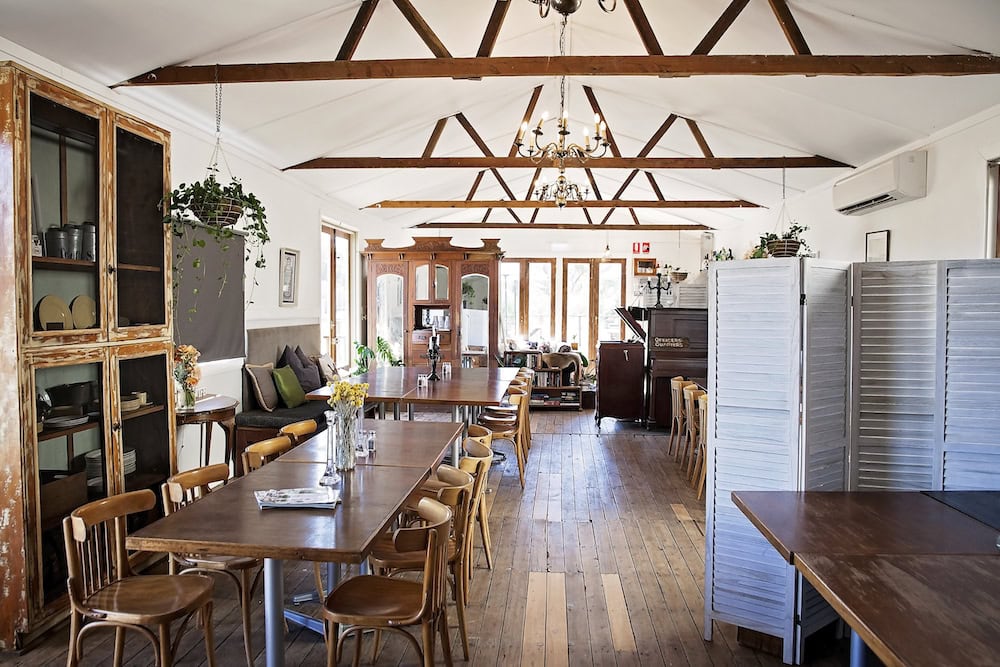
Then there are the experiences that aim to connect guests with the reality of life on a 28,500-acre station. Depending on when they visit, guests can join in with the crop inspection, check on the lambing ewes or even lend a hand mending the fences. Shearing takes place for most of August and there are always a pack of working dogs hard at it. The glorious landscapes also make for excellent bushwalking, mountain biking, fishing and wildlife spotting, and the stargazing is second to none.
The key to its appeal is authenticity. Farming is still the main industry on the property (�it does the grunt work of the income for sure,� Angie laughs) and that means that guests get to experience life on a real working station. �We didn�t want to put things on for the tourists,� she says. �The best experiences are the most authentic, so people are really joining us for a few days. Everything is hosted by the owners, and they are experiencing what�s really happening on the farm at the time.
�We�ve all noticed that the things people love are the simple things. The stars at night, the red dirt, hanging out with a kelpie on the back of a ute. I think the country underestimates the power of those experiences, the really simple things that we take for granted when we live out here. Every guest is looking to disconnect from the city, put their phone away for a while and surrender to the rhythm of the land.�
Angie Armstrong
The concept sounds simple, but it has the potential to be revolutionary. Genuine interactions like these between urban dwellers and primary producers could close some of the gap between the city and the country. The Armstrongs talk to their guests about things such as responsible wool standards, animal welfare and the supply chain from sheep to shirt.
�This is stuff that�s at the core of modern agriculture, and we�re here talking to end consumers about it. That�s incredibly rare,� Angie says. �It opens up questions and discussions about family farming, commodity farming, broadacre farming and dry farming. We can help create a shared understanding between consumers and producers.�
Challenges on the land
�There�s always that love/hate relationship with the land � drought, floods, pests,� Angie explains. �But now I couldn�t imagine living anywhere else. It really is a land of opportunity. I wouldn�t have tried any of the things I�ve done if I�d stayed in Melbourne. Maybe necessity is the mother of opportunity out here.�
Building the farmstay also faced its share of challenges. Designs had to change drastically during the planning stage thanks to restrictive policies from local government and council. Once the accommodation was finally complete, Covid hit and lockdowns wiped out their intended visitor base. But challenges are all part of living out here.
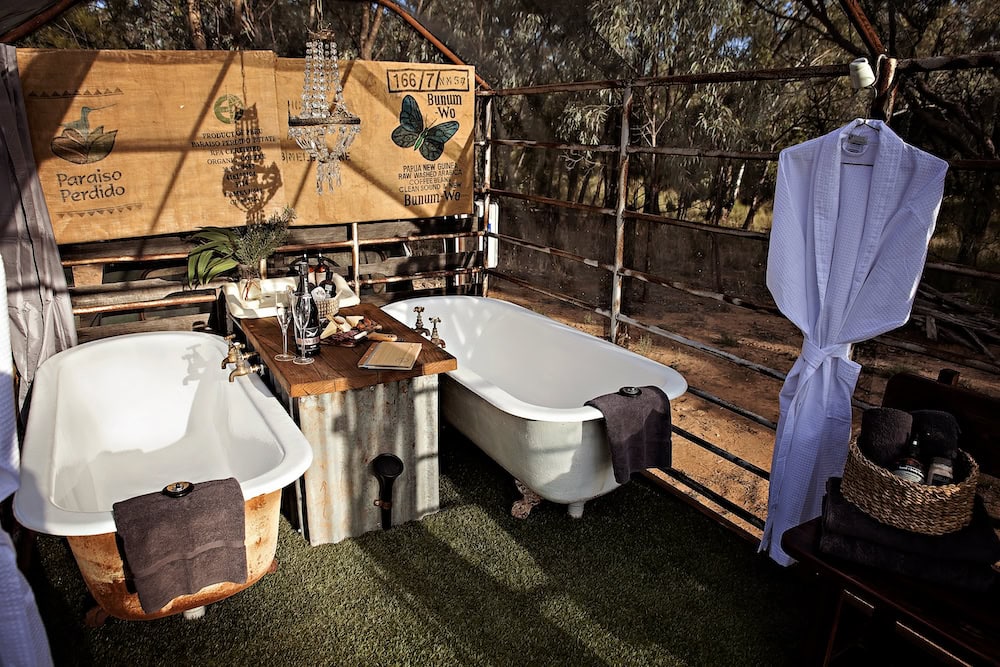
Eamon�s not sure yet whether he wants to continue on the family farm, though he still has a few years to decide. At the moment, his favourite parts of station life are playing with the kelpies and driving on the tractor with his dad.
Whatever comes with the next generation, the Armstrongs have opened up a new world of possibilities for him on Callubri Station. �I hope Eamon will explore the world and business opportunities out there,� says Mike. �And I hope that we can continue to build a profitable business in tourism and the production of food and fibre creating an option for him to consider.��
Charles agrees. �Yes, it is important to have the property continue, but it must not become a burden. Each generation has to make their own life, and if that involves keeping the farm going, that�s great.�
If you enjoyed reading this piece on the Armstrongs of Callubri Station, you might like to check out our coverage of other farming families like the Suttors.


